From 1669 Seedling to Second Life — The Legacy of George’s Valley Oak
When a storm tore through Atherton and brought down a towering 300+ year-old Valley Oak in George’s backyard, it wasn’t just a tree that fell—it was a monument to time, family, and memory. George had purchased the property 22 years ago, drawn in part by the presence of this majestic oak. Losing it felt personal.
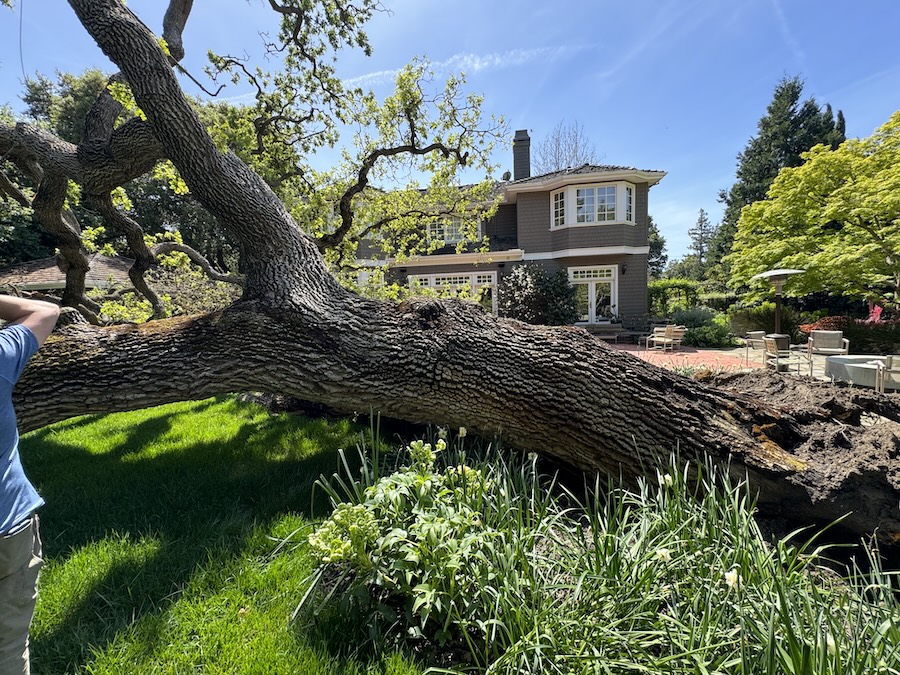
Remarkably, when the tree finally fell, it did so with almost poetic precision—landing gently, right in the middle of the lawn. It missed the house by just a few inches. For such a massive, ancient tree to come down so gracefully felt like a final act of care and consideration, as if the tree itself had chosen a peaceful exit.
This Valley Oak had stood long before the neighborhood even existed—the first house in that part of Atherton was only built in the 1960s. According to George’s ring count, the tree likely began its life around the year 1669, as a tiny seedling sprouting from the California soil. It was already 109 years old during the American War of Independence. By 1822, when California became part of Mexico, the tree was already 153 years old, and it was nearly 180 years old by the time California joined the United States.
This tree had lived through every chapter of California’s history and stood as a silent witness to centuries of transformation.
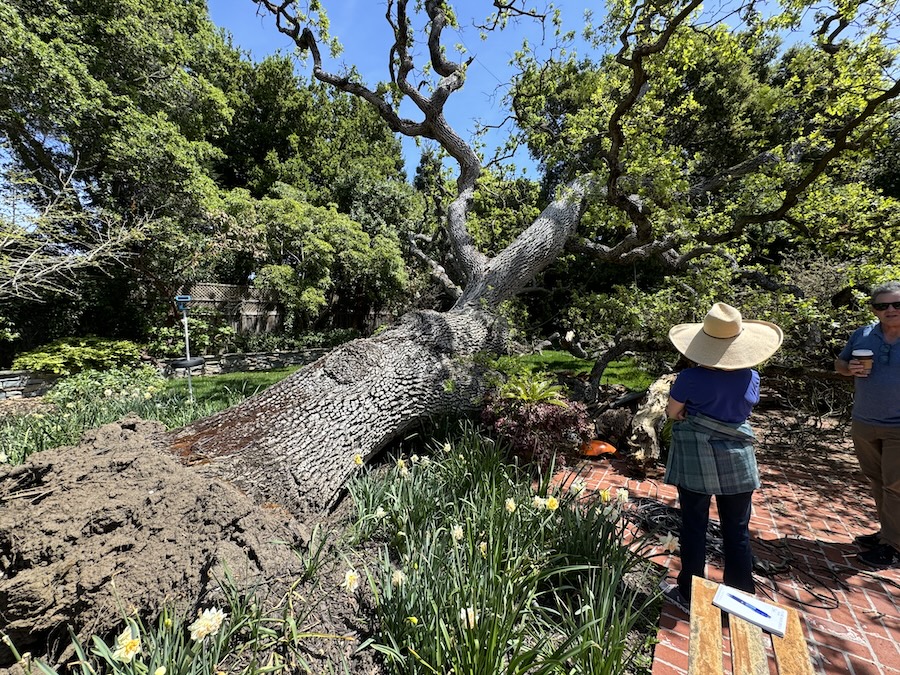
It appears that the health of the tree began to decline around the 1960s when development and construction started in what is now George’s neighborhood. When George bought the house 22 years ago, he discovered that the tree’s collar and root flare were buried under compacted soil—a condition that had already led to visible signs of root rot. George took every possible step to alleviate the damage and support the tree’s health. Unfortunately, once red rot sets in, it marks the beginning of a slow and irreversible process of decay, gradually weakening the root system over time.
But where others might have seen only damage and removal, George saw an opportunity—and so did we.
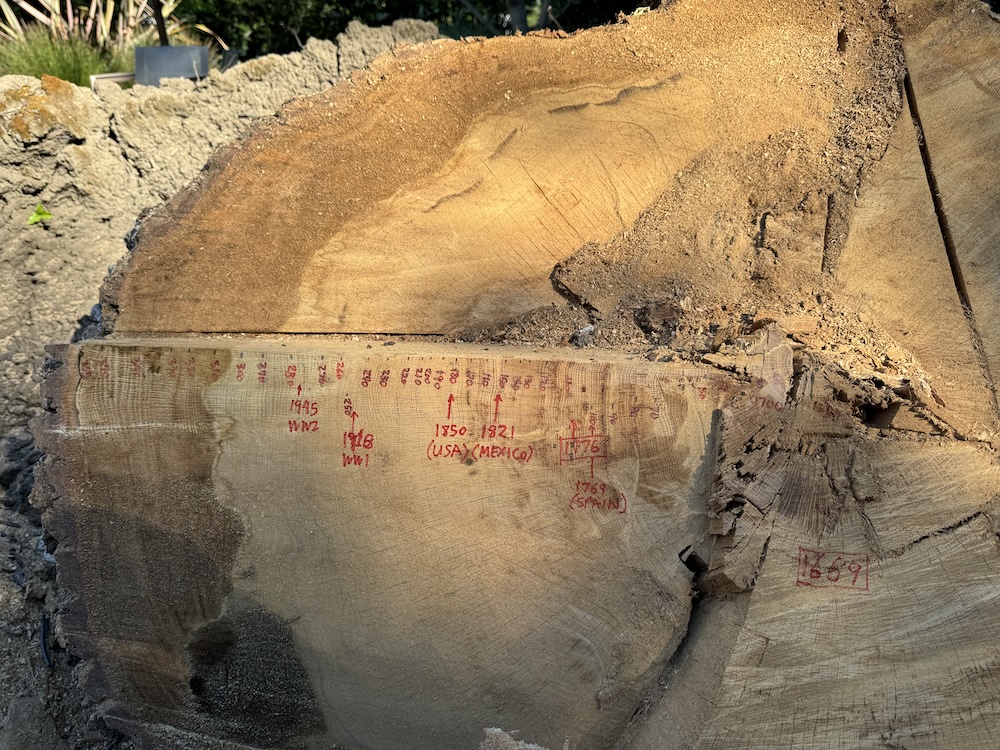
From the beginning, George made it clear: this tree mattered. It had witnessed centuries of change, and he wanted to honor its legacy. He reached out to Arborist Now with a simple but powerful goal: salvage and repurpose as much of the oak as possible, turning its end into a new beginning.
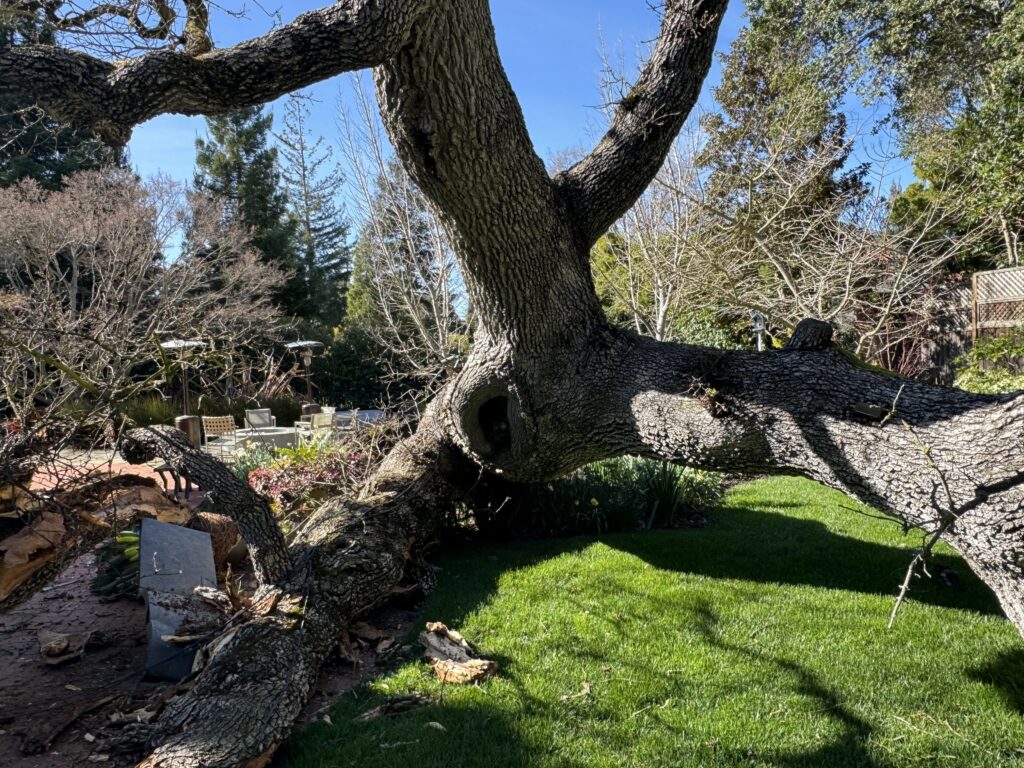
When our team visited the site, we saw the scale of the task. The trunk was over four feet in diameter and access was limited. That didn’t deter us—it inspired us. Clint and Josh consulted with George to design a milling plan that would transform the tree into usable, beautiful material: slabs for future furniture and rounds for tables that could serve as heirlooms.
We agreed on an on-site milling approach using the Lucas mill, not only because of the sheer size of the trunk but because moving the material was nearly impossible. Before removal began, our crew—led by Clint and Matt—carefully protected the site with plywood to prevent further damage. Every step reflected our values: respect for the property, the tree, and the client’s vision.
We agreed on an on-site milling approach using the Lucas mill, not only because of the sheer size of the trunk but because moving the material was nearly impossible. Before removal began, our crew—led by Clint and Matt—carefully protected the site with plywood to prevent further damage. Every step reflected our values: respect for the property, the tree, and the client’s vision.
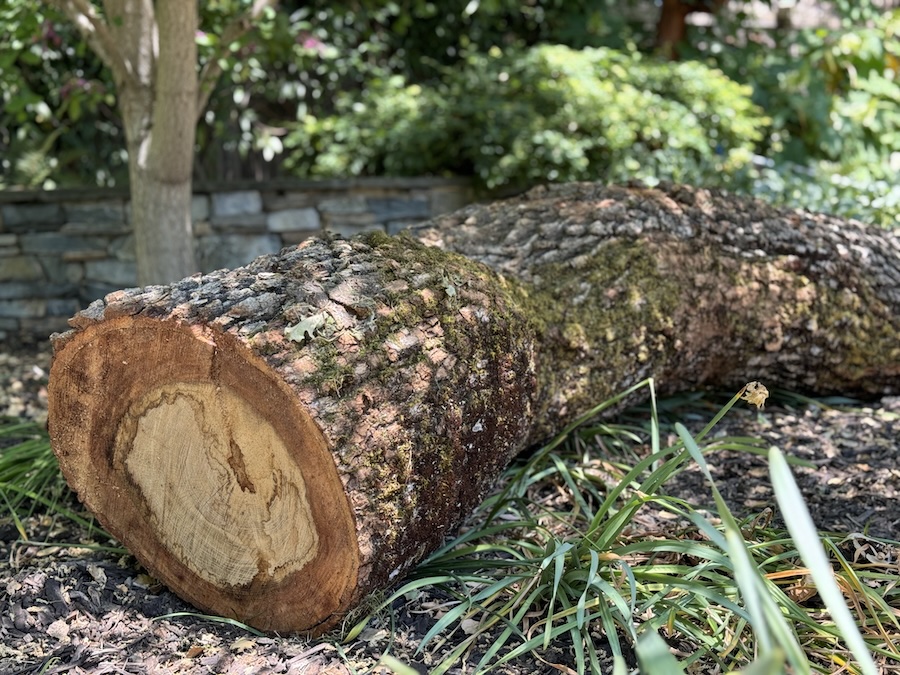
The removal itself took just under two days. The team worked efficiently, salvaging key portions of the tree while chipping and removing the rest. Then, we transitioned immediately into milling. We could see clear signs of red rot in the main trunk—stretching up to six feet high and fading as it went. Instead of discarding these sections, we milled them into slabs as well. Once fully dry, the voids left by rot can be filled with epoxy, making them perfect for furniture pieces. In fact, the presence of red rot tells a story of the tree’s long life and natural challenges—it adds depth, character, and visual intrigue to the wood, allowing anyone who sees it to witness its history firsthand.

Over the next two and a half days, we turned that fallen oak into:
- Eight large slabs (3″ thick) from the main trunk
- Five additional slabs from a major lateral branch
- Two 50” diameter, 6” thick rounds from the base
Each piece was stacked, stickered, sealed, and stored to air dry naturally on-site. We even left three unmilled logs in shaded areas of the backyard as natural seating—functional and symbolic.
But this story goes beyond just milling. George became a partner in the process. He flew a drone throughout the project, capturing incredible footage. He even took the time to create a historical timeline of the tree’s life by counting rings all the way back over 350 years—to a time before our country’s founding.
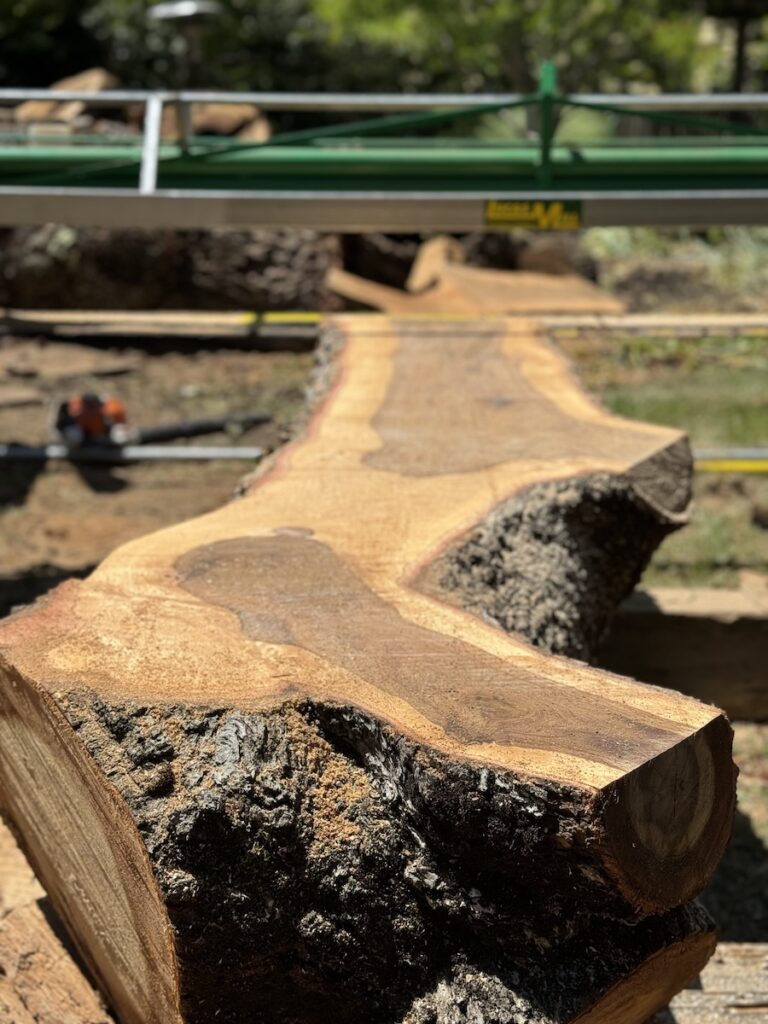
His passion reminded us why we do this work. At Arborist Now, we don’t just remove trees—we tell their stories. We help clients honor what once stood tall in their lives, transforming loss into legacy.
In the end, George was thrilled. What started as a storm-induced tragedy ended as a project full of purpose, beauty, and lasting value. He now has material that will one day become furniture, artwork, and family treasures—reminders of a tree that meant the world to him.
Have a tree with a story? Let us help you preserve it.


